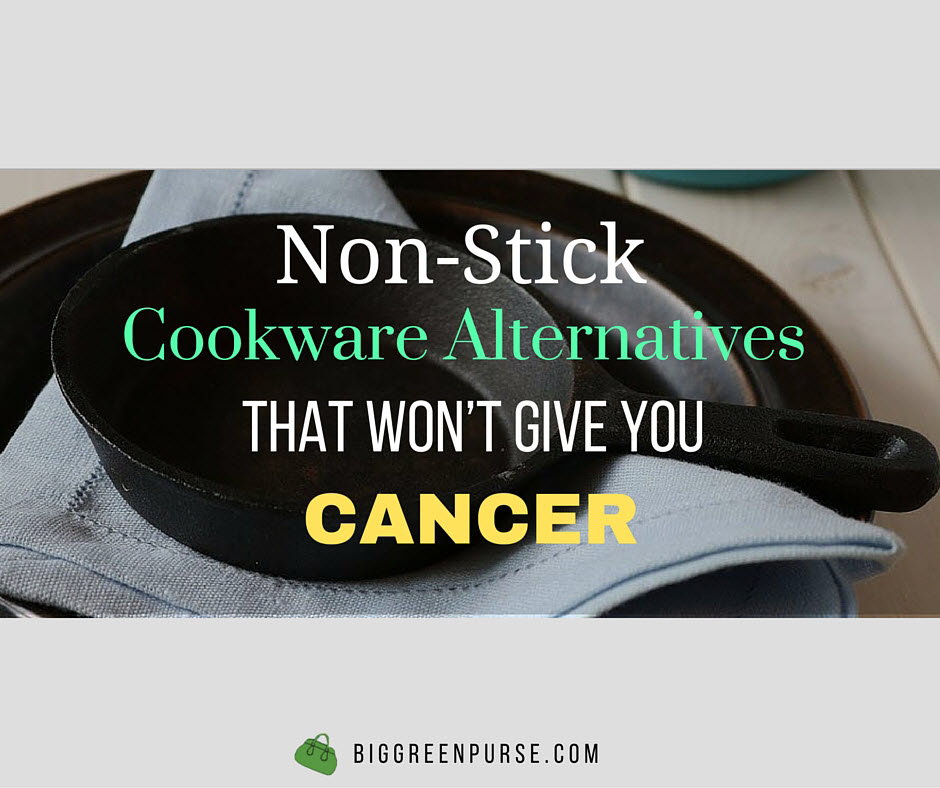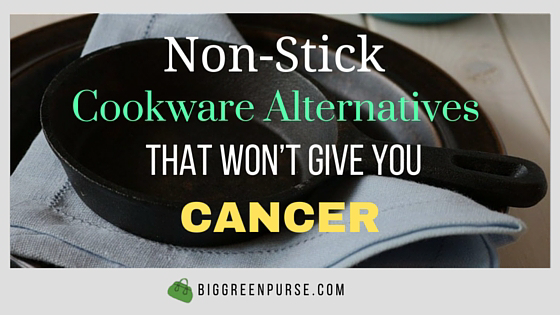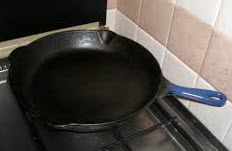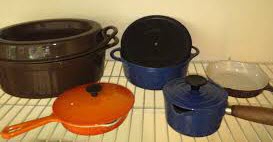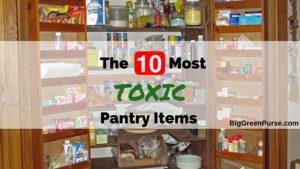Research has shown that cooking with Teflon-type cookware could expose you to toxic chemicals that might cause cancer. Specifically, PFOA, a chemical linked to cancer, liver disease, and reproductive disorders, was used for decades by DuPont and other companies to make non-stick pots and pans, reports Environmental Working Group. Scientists at Harvard and the University of Massachusetts have found that PFOA is “hazardous at the tiniest doses,” which is why you should avoid it if you possibly can.
What can you cook with instead? Here’s a list of non-stick cookware alternatives, all of which are available in kitchen stores, some grocery stores, big box and department stores, and in our own Big Green Purse store on Amazon.com.
⇒ Cast Iron
⇒ Stainless Steel
⇒ Stoneware & Ceramic
⇒ Glass
CAST IRON
√ Inexpensive
√ Easy to clean
√ Versatile
√ It works!
Once cast iron is properly seasoned (just follow the directions on the label that comes with most pans), you can cook absolutely anything in it, though I wouldn’t use it to boil water.
It’s great for sauté-ing, frying, braising, stewing, and cooking something as simple as scrambled eggs.
It works as well on the stovetop as it does in the oven. In fact, if you’re cooking a dish that needs to be browned on the top, you can easily move your cast iron skillet or casserole from the range to the oven broiler without missing a beat.
Clean it with a gentle scrub brush or slightly rough sponge and hot water, then either dry it with a towel, or just put it back on the range for a minute and let the heat evaporate whatever water remains.
If you’re washing out a greasy pan, you only need a little bit of liquid dish soap – you don’t want to wash away the seasoning on the pan that makes it so effective.
Possible Downside: Cast iron is heavy. But I personally like the exercise I get using it and find that other than a 10-qt Dutch oven, it’s never too much to handle.
STAINLESS STEEL
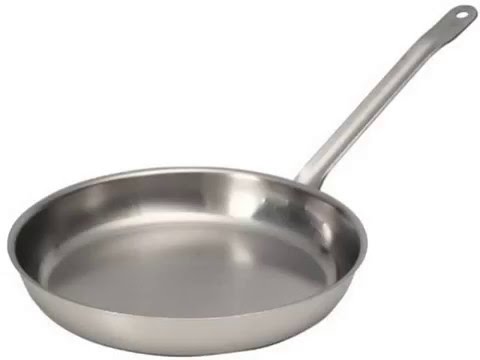
√ Great for browning and sauté-ing meat
√ Can tolerate high heat
√ Can go from range to oven as long as it doesn’t have plastic handles
Downside: Food can quickly burn if the heat gets too high or the pan gets too dry. Then, the pan can be difficult to scrub clean.
The denser or heavier stainless steel is, the better it will be at conducting heat and the easier it will be to clean. Use liquid soap for most cleaning, and a little baking soda to scrub away stuck food.
STONEWARE, ENAMELED CAST IRON & CERAMICS
√ Good for stews and casserole dishes, or for making a meal in a dish you can both cook and serve in
Downside: Beware ceramic pots that are glazed inside with materials that could contain lead or other toxic chemicals.
Contra Costa (CA) Health Services warns against using traditional glazed terra cotta (clay) dishware from Mexico and other Latin American countries, as it is likely contaminated with lead.
Similarly, the Department of the Environment in Australia warns against using highly decorated traditional dishes from some Asian countries, and antique pots and pans that are heavily decorated.
Enameled cast iron is particularly attractive and can easily go from stovetop to the oven.
GLASS
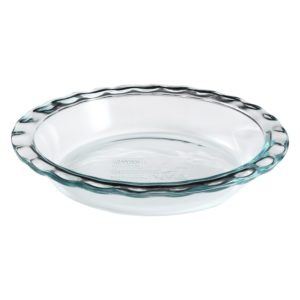
√ Non-reactive, so food won’t pick up any taste from the glass
√ Affordable
√ Can easily go from the oven to the table, as long as you set it on a potholder or non-metal trivet until it cools down.
Downside: If you put hot glass on a cool metal surface, like the top of a stove range or a metal trivet, it could shatter into a thousand pieces. So use glass—but use it carefully, and pay attention to extreme temperature shifts.
What About Aluminum?
Aluminum cooks a lot like stainless steel, but it’s usually lighter.
Cooking at high heat won’t emit toxic fumes, like Teflon-type pots and pans.
But there is some concern that aluminum can leach into food and potentially have human health problems.
Aluminum is on the “2007 list of top priority toxins in the U.S., a list put out every year by the Agency for Toxic Substances and Disease Registry,” reports the Livestrong Foundation. Concerns have also been raised about the link between aluminum and Alzheimer’s. Right now the Alzheimer’s Association does not believe that “everyday sources of aluminum pose any threat” to increased Alzheimer’s risk.
One of my biggest complaints about aluminum is that I can often taste it in the food I cook. I have aluminum 9×13 baking pans that I used to also bake meals like lasagna in. However, I noticed that the lasagna would sometimes pick up an aluminum taste, because the acidic tomato sauce in the lasagna reacted with the aluminum in a corrosive way. The only thing I use my aluminum pans for now is the occasional cake.
What Should You Do With Any Non-Stick Cookware You Have?
If you currently use non-stick cookware and want to get rid of it, don’t donate it to someone else.
Either send it back to the manufacturer, or just throw it away.
If you must continue cooking with it, use it on very low heat and only for boiling water or other tasks that have little chance of burning.
Do not use metal utensils, like spatulas or stirring spoons, as those could scratch the nonstick coating off and into the food you’re cooking. Here’s a silicone spatula set you might like.
Sources:
TwoKitchenJunkies.com in The Ultimate Guide to Healthy Cookware


